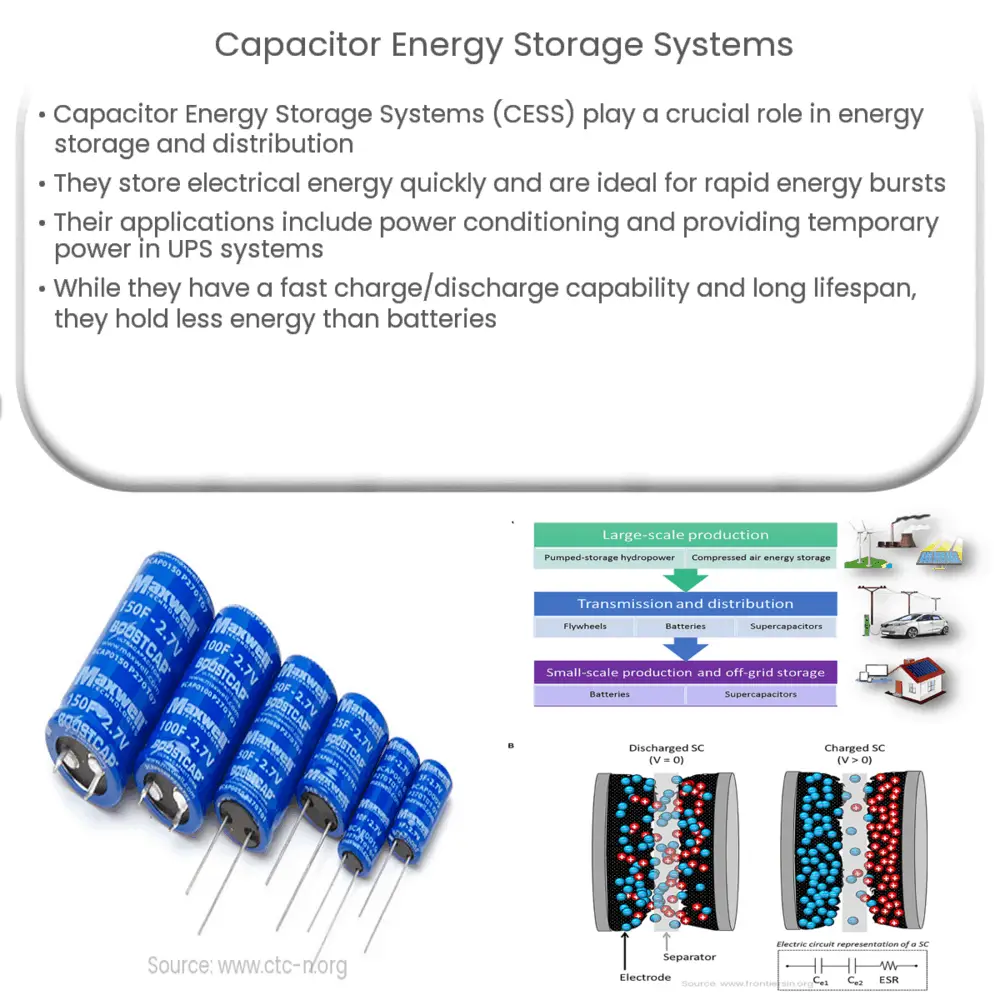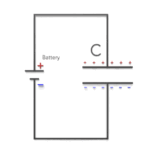Explore the fundamentals of Capacitor Energy Storage Systems, their types, applications, advantages, future trends, and their role in energy sustainability.

Understanding Capacitor Energy Storage Systems
In the ever-evolving world of energy storage, Capacitor Energy Storage Systems (CESS) have become a crucial player. They are the unsung heroes in energy storage and distribution networks, making them indispensable for various industrial and commercial applications.
Capacitors are devices that store electrical energy in an electric field. They can quickly release stored energy, making them the perfect solution for power systems that require quick bursts of energy.
Working Principle of Capacitors
Capacitors are essentially two conducting plates separated by a non-conductive material or dielectric medium. The working principle of a capacitor involves charging by storing energy electrostatically in an electric field. When a potential difference (voltage) exists between the conductors, an electric field is established across the dielectric, causing positive charge to collect on one plate and negative charge on the other. This difference in charge is what capacitors use to store energy.
Capacitor Energy Storage Systems Applications
- Power Conditioning: Capacitor energy storage systems can smooth out power supply lines, removing voltage spikes and filling in voltage sags. They are particularly useful in power quality applications where the rapid charging and discharging capabilities of capacitors are crucial.
- Uninterruptible Power Supplies (UPS): In UPS, capacitors hold enough energy to provide temporary power to equipment until standby systems kick in. They are typically used in computer installations, where they can prevent data loss in case of sudden power outages.
Types of Capacitor Energy Storage Systems
Capacitor energy storage systems can be classified into two primary types: Supercapacitors and Ultracapacitors.
- Supercapacitors: Also known as electric double layer capacitors (EDLC), they store energy by achieving a separation of charge in a Helmholtz double layer at the interface between the surface of a conductive electrode and an electrolyte. Their energy density is typically hundreds of times greater than conventional capacitors.
- Ultracapacitors: These are a subtype of supercapacitors that offer even higher capacitance values. They can achieve this by having an electrolyte as the dielectric and use porous materials to provide a large surface area, thus achieving an extremely thin dielectric layer.
The usage and selection of capacitors in an energy storage system depend on the specific application and requirements. Capacitor Energy Storage Systems, with their fast charging-discharging capability and high power density, can play a significant role in today’s renewable energy sector.
Advantages and Disadvantages of Capacitor Energy Storage Systems
Like any technology, Capacitor Energy Storage Systems have both advantages and disadvantages.
Advantages
- Fast Charge/Discharge: Capacitors can charge and discharge in seconds, making them suitable for applications requiring rapid bursts of power.
- Long Lifespan: Unlike batteries, capacitors do not suffer from wear-out mechanisms, ensuring a longer lifespan, often over a million charge/discharge cycles.
- Temperature Tolerance: They can operate under a wide range of temperatures, making them suitable for use in various environmental conditions.
Disadvantages
- Low Energy Density: Compared to other forms of energy storage like batteries, capacitors store less energy per unit of volume or mass, making them less suitable for long-duration energy storage.
- High Self-Discharge: Capacitors tend to lose their stored energy relatively quickly when not in use, known as self-discharge.
Future of Capacitor Energy Storage Systems
The future of Capacitor Energy Storage Systems seems promising with ongoing research and technological advancements. The development of hybrid capacitor-battery systems is one promising approach. By combining the high energy density of batteries and the high power density of capacitors, these systems could provide both long-duration and high-power energy storage, making them highly versatile.
Conclusion
In conclusion, Capacitor Energy Storage Systems have emerged as an important element in the field of energy storage and distribution. Despite some drawbacks, they offer unique advantages that make them ideal for specific applications, especially where rapid charge/discharge and long lifespans are required. With continued innovation and technological advancements, capacitors have the potential to revolutionize energy storage systems and play an even more vital role in power management solutions across various industries. Whether used alone or in combination with other technologies, Capacitor Energy Storage Systems represent a step forward in our quest for reliable and sustainable energy solutions.



